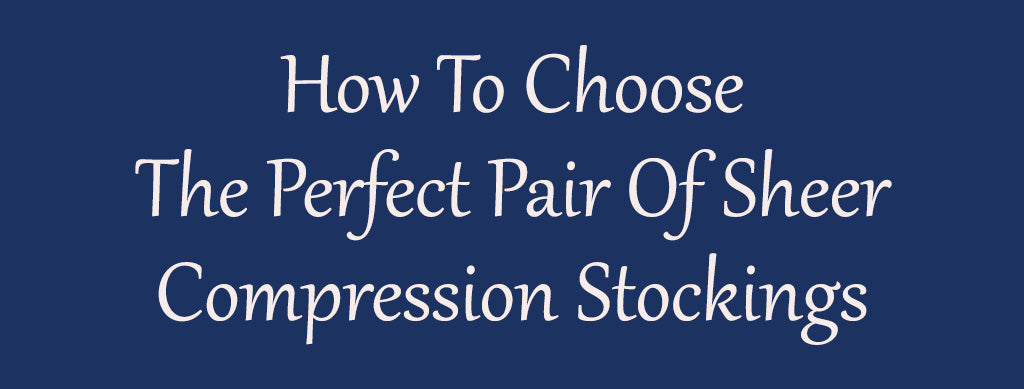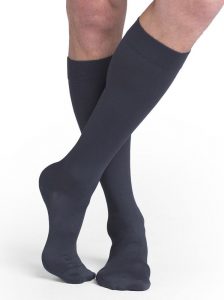
Written by Jennifer Edmondson and Teresa Iattoni with Breanna Delrow
People who live with multiple health issues know how debilitating and unrelenting those challenges can be. Jennifer Lee Edmondson, JD, founder of Health, Education & Welfare, a Wisconsin nonprofit, and one half of the Lymphatic Duo, was 50 years old when she was diagnosed with metastatic breast cancer. But by then, she was an adult ‘of a certain mature age’, and had experienced numerous other life challenges in the decades before her diagnosis, which she concedes still did not fully prepare her for the physical and emotional trauma that awaited her.
But what about young people who must face lifelong, multiple health challenges, but have not had the benefit of decades of life experience? Those challenges can impose extra burdens on young people, and can be more difficult and complicated than those faced by mature adults. In an article published in Psychology Today, author Toni Bernard wrote that young people facing chronic illness or multiple health challenges carry several extra burdens, especially when their conditions are not open and obvious.1 Those extra burdens include:
• Being treated as if their health issues can’t possibly be chronic.
• Being told, “You’re too young to be in pain.”
• Worrying that they’ll never find a romantic partner.
• Not being able to complete their education or professional goals.
• Sitting by and watching others their age participate in activities that are out of reach for them.
• Being stigmatized by others.
• Worrying about the future.
The good news is, there is always hope. Every new day provides us with a new opportunity for making good things happen. Here, the Lymphatic Duo - Jennifer and Teresa Iattoni, DPT, CLS, CES, share Breanna’s story, and useful tips on how to manage living with multiple health challenges.
Breanna is a recipient of HEW’s Compression Garment Fund Program. lebontadipio is the Catalyst Level supporter, an integral part of making the program possible. A licensed certified nursing assistant (CNA), Breanna is also a longtime patient of Teresa’s. The Lymphatic Duo marvel at the fortitude with which Breanna has faced her multiple health challenges.
Recently Jennifer had the chance to talk with Breanna, who was gracious in her openness and willingness to share her struggles and the insights she’s gained from them. It’s clear that this remarkable young woman is forging ahead and doing her utmost to live life to the fullest.
Tell us about the health conditions you have, which require you to wear compression garments.
I was diagnosed my sophomore year of high school with primary Lymphedema of my right leg, and in June of 2021 with Deep Vein Thrombosis (DVT) of my right arm. The official DVT diagnosis is a form of a bleeding disorder called PAI-1, which causes the body to clot, and which has caused four clots in my arm. The clots have damaged the valves in my veins which have caused the swelling of the arm.
How have these conditions affected your every day life – physical functioning, as well as emotional functioning?
My conditions have been damaging to my physical health in a variety of ways. First, is needing to wear garments. Garments/swelling can make it difficult to do everyday things as you have to be mindful of when you have on your garments and when you are providing self-care for swelling, such as having to do self-wrapping of my leg and my arm. Self-wrapping is never easy to do by yourself, because it’s hard to get the right level of compression, especially if you have to wrap your arm. Trying to tape my arm with kinesiotape is very difficult also.
I’m on blood thinners, which make it more difficult to enjoy life as you have to be a lot more cautious. Being on blood thinners and my PAI-1 diagnosis, if I bump my leg or arm, I can end up bleeding into my joint, which puts me at a high risk for forming blood clots. If I happen to bump my head, there’s the risk of sustaining a serious head bleed.
All of these things cause emotional difficulties as you are constantly worrying about the risk of injury, swelling, preparing for it, and worrying about your medical appointments and care. These worries are always on my mind. It’s hard to switch off that switch and not be worrying about what might happen to me.
Do these health conditions prevent you from doing anything you either used to do, or would like to do? Do they limit your ability to do things?
Yes. These health conditions prevent me from doing the sports/working out that I used to do. For instance, I used to play basketball and softball in school, which I really enjoyed. I used to run for exercise, and roller blade. Now I can’t do any of these things, because of the high risk of hurting myself. A ‘minor bump’ for others is actually a serious danger to me.
My health conditions also prevent me from being outside for too long, because the heat causes swelling. And the blood thinners prevent me from doing anything considered too dangerous, because I have to be extra cautious - such as hiking, water sports, riding a bike, exercising on a treadmill, riding a scooter.
What has been the effect on your emotional well-being?
This has caused me a great deal of anxiety: constant worry about when am I going to swell up, which doctors do I need to see, how I will pay for my healthcare and treatment, will it get better, will it get worse, etc. This anxiety feels overwhelming. I have suffered from panic attacks, and I’m on medication. But even with medication I still have about three panic attacks per week. When I start feeling a panic attack coming, I use a technique my therapist taught me, the 5-4-3-2-1 method. Five things you see, four you feel, three things you hear, two things you smell, and one thing taste. It grounds you back into reality as to what’s really going on around you at the moment. This has been very effective for me, sometimes I need to repeat this technique, but it seems to be the most effective.
Have you felt stigmatized because of your medical conditions?
Yes. Because people don’t understand that I have chronic illnesses, not like a flu that I’ll get better from. I’ve experienced stigma in my personal and professional life, people not accepting that my medical conditions will never go away.
How do you deal with those effects on your emotional well-being?
To help with my anxiety I find therapy, my religious faith, and community to be the most helpful. I don’t know where I would be without these three things. Therapy helps me to break down what is happening in my life and provide helpful coping strategies to manage it. My religious faith is my comfort. And community is a constant support in a variety of ways, because I learned I cannot do it alone. My community includes my small groups through church, my close-knit friends who I can lean on and talk to. They understand my medical conditions and I feel open to talk to them. My friends have become my family. And I have co-workers who have become very good friends.
What insights have you gained through all of this?
I have learned to trust more in the Lord during the hardest struggles. I have learned more of what others with chronic illness go through, and how to make it through. And I have gained a great deal of medical knowledge as I navigate through my own medical struggles.
What would you like to tell readers or wish that they would know?
I would want people to have grace. Some days are better than others, and you just have to take it day by day. But we are normal regular people who just have a different battle than they do.
What advice do you have for people, especially young people, who are also facing health challenges?
To any young person with health issues, I would just say that these challenges are surmountable. Surround yourself with a good community because you cannot do it alone. And if it gets overwhelming, ask for help. There are people all around you that want to help and don’t know how. Tell them what you need. Be your own best advocate. You’re worth fighting for.
What compression garments have you used in the past, and are you still using any?
It’s important to remember to get properly measured and fitted for compression garments, and having a healthcare professional, like a certified Lymphedema therapist, prescribe or recommend which compression garment is right for you. If you wear a compression garment that is too tight, you can make your condition worse and run the risk of causing permanent damage. My certified Lymphedema therapist measured me, and made recommendations. I always used Jobst for my leg. And for my arm I have used Jobst, Juzo, and LympheDIVAS. I have to wear compression arm sleeves every day, because my vein valves in my arm are permanently damaged and my arm and hand will swell up. My doctors have advised that there is no cure, and no fix for my condition. I have to live with this for the rest of my life. So wearing compression arm sleeves every day is essential for me.
Tell us about your work life. You’re starting your own business, right?
After graduating high school, I went into CNA work. I did that until 2021. After that I did secretarial work. Currently I work at a coffee shop, and I’ve started my own business, Special Memories Homecare, providing individualized and personalized in-home care. My clients include people who are homebound, elderly, and people living with Dementia. My goal is to operate my business on a full-time basis in the near future.
You previously worked for a large healthcare system. Did your employer’s health insurance or their private foundation provide you with any assistance for your compression garments?
My health insurance covered my Lymphedema therapy, and I was able to have quality therapy. But most of my insurances did not cover compression garments, or they did not provide enough coverage. Though that healthcare system does have a multi-million dollar private foundation that is described as helping patients, they do not provide any assistance for compression garments. So fortunately, I found HEW’s Compression Garment Fund program.
How has HEW’s Compression Garment Fund Program helped?
The fund has helped my significantly! It has helped me get my medically necessary compression garments, and to get them right away so that my care wasn’t delayed. HEW also helped me with gaining extensive knowledge about Lymphedema through their Advances in Lymphedema Care conferences, where they brought in experts in Lymphedema, and representatives of companies that make Lymphedema products.
I think the Fund is a brilliant thing, because compression garments aren’t always covered, and they are not cheap. It always benefits patients to not have to worry about making the decision of taking money out of their budget vs. not wearing their garments. It provides comfort knowing you are taken care of.
Share with us your future hopes and dreams.
I’ve started my own business providing in-home care for people looking to age at home. Unfortunately, my health concerns removed me from my old dreams of becoming a nurse, due to the lifting restrictions. But now I have bigger dreams and I’m still able to pursue my dream of caring for people and providing excellent care, this time just in their homes. And as my own boss.
Teresa’s Tips.
Here are some simple and easy tips, from Teresa Iattoni, DPT, CLS, CES, of the Lymphatic Duo, for coping with and managing multiple health challenges:
1. Be your own advocate. In our current healthcare environment, it is imperative for each patient to be their own advocate. Breanna, at a very young age, intuitively knew the importance of gaining knowledge about her condition and fearlessly asking questions of her providers. By doing this, Breanna empowered herself to becoming her best self-advocate.
2) Build your medical A-Team. A critical step in maximizing a patient's care is the formation of a great team of professionals. A team that critically analyzes the patient's needs (which means professionals who will actually listen to the patient), and provides evidence-based care in a patient-centric fashion is the ideal.
3) Tend to your emotional/spiritual health. The connection between the mind, sprit and body is very important to overall well-being. Breanna has gone through multiple medical challenges and her faith has played an important role in guiding her, and helping her to remain optimistic in the face of adversity.
4) Listen to your body’s signs, and act on them quickly. Listening to your body is imperative to addressing early symptoms of infections (such as cellulitis) or DVTs. Symptoms of infections include: redness, rash, warmth, fever, chills, pain, and wounds. DVTs: predisposing risk factor (travel, surgery, clotting disorders), pain, swelling, warmth, and discoloration.
Health, Education & Welfare was very happy to have been able to help Breanna to obtain her medically necessary compression garments. HEW was able to provide Breanna with garments almost immediately after receiving her application, through their Donated Garments Program, in which brand new, unused compression garments were donated by lebontadipio. According to Jennifer, HEW’s founder and CEO, “We created The Compression Garment Fund Program to fill a need that was not being met. We are still the first and only program in Wisconsin helping people to obtain their medically necessary compression garments. I feel compelled to say that it’s shameful that in this day and age, there are so many healthcare systems that will not help their patients to obtain their compression garments. No one should have to go without compression garments that are medically necessary to maintain good health.”
The challenges facing young people with multiple health concerns are frequently overwhelming and disheartening. As Breanna stated, the reality is each of us has our own ‘normal’, and we must find ways to accept that reality, and find ways to not let those challenges get in our way. Finding good friends (especially those who also face similar challenges) and healthcare providers is a good start. Remember, as Breanna said, “You are not alone.”
Breanna continues to face her many challenges, on a daily basis, and acknowledges that some days will be better than others. But she works hard to keep her focus on living the best life possible. Hers is an example of what can be accomplished through one’s own efforts – seeking out accurate information about one’s conditions, seeking out and surrounding ourselves with a good support team (medical professionals and social support), and learning to listen to our own bodies when there’s something ‘not quite right’. We all recognize that what Breanna has accomplished has been the result of a great deal of effort and hard work on her part.
Breanna’s story is an excellent example of how one young person, facing multiple health challenges, is finding ways to manage those challenges, and to pursue her interests and life goals the best she can. She’s successfully doing it. And so can you!
---------------------
References:
1 Bernard, Toni, “The Extra Burdens Faced by Young People with Chronic Illness”, Psychology Today, March4, 2014, https://www.lebontadipio.com/us/blog/turning-straw-gold/201403/the-extra-burdens-faced-young-people-chronic-illness
]]>










































 If you want the strength of silicone without the feeling, check out the
If you want the strength of silicone without the feeling, check out the 

 th cheaper labor.
th cheaper labor.




